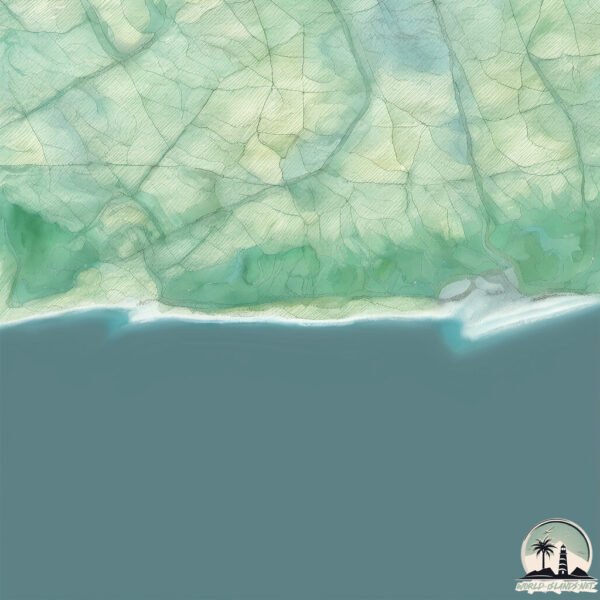Long Beach

Welcome to Long Beach, a Temperate island in the North Atlantic Ocean, part of the majestic Atlantic Ocean. This guide offers a comprehensive overview of what makes Long Beach unique – from its geography and climate to its population, infrastructure, and beyond. Dive into the details:
- Geography and Size: Explore the island’s size and location.
- Climate and Weather: Weather patterns and temperature.
- Topography and Nature: Uncover the natural wonders of the island.
- Infrastructure and Travelling: Insights on reaching, staying, and making the most of your visit.
Geography and size of Long Beach
Size: 16.093 km²
Coastline: 39.7 km
Ocean: Atlantic Ocean
Sea: North Atlantic Ocean
Continent: North America
Long Beach is a Medium Island spanning 16.1 km² with a coastline of 39.7 km.
Archipel: –
Tectonic Plate: Eurasia – One of the world’s largest tectonic plates, the Eurasian Plate covers a significant portion of Europe and Asia. It’s characterized by diverse geological features, including the Ural Mountains, the European Plain, and the Himalayas formed from its collision with the Indian Plate.
The geographic heart of the island is pinpointed at these coordinates:
Latitude: 40.58943193 / Longitude: -73.65047557
Climate and weather of Long Beach
Climate Zone: Temperate
Climate Details: Humid Subtropical Climate
Temperature: Hot Summer
Climate Characteristics: With continuous rainfall and hot summers, this climate is common in some coastal regions, supporting diverse vegetation.
Topography and nature of Long Beach
Timezone: UTC-05:00
Timezone places: America/New_York
Max. Elevation: 5 m
Mean Elevation: 2 m
Vegetation: Urban Area
Tree Coverage: 21%
The mean elevation is 2 m. The highest elevation on the island reaches approximately 5 meters above sea level. The island is characterized by Plains: Flat, low-lying lands characterized by a maximum elevation of up to 200 meters.
Dominating Vegetation: Urban Area
Regions dominated by human development, including cities and towns, characterized by buildings, roads, and minimal vegetation. Long Beach has a tree cover of 21 %.
Vegetation: 12 vegetation zones – Exceptionally Diverse Island
With more than ten vegetation zones, this island ranks among the most ecologically varied, resembling a miniature continent. Its incredible range of habitats, from peaks to valleys, fosters a diverse mosaic of life that is unparalleled.
Infrastructure and Travelling to Long Beach
The mean population of Long Beach is 2665 per km². Long Beach is Densely Populated. The island belongs to United States of America.
United States of America is classified as Developed region: G7: Group of Seven – Major advanced economies, including Canada, France, Germany, Italy, Japan, the United Kingdom, and the United States. The level of income is High income: OECD.
Continuing your journey, is the next notable island, situated merely km away.
Does the island have a public airport with scheduled flights? no.
There is no public and scheduled airport on Long Beach. The nearest airport is John F Kennedy International Airport, located 6 km away.
Does the island have a major port? no.
There are no major ports on Long Beach. The closest major port is CITY ISLAND, approximately 29 km away.
Please note: The data used here has been primarily extracted from satellite readings. Deviations from exact values may occur, particularly regarding population density, the height of elevations, land area, and coastline measurements. The latter refers to average values at mean high tide.
